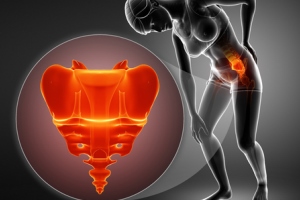
Spinal decompression therapy can help with your facet syndrome. This is a non-surgical treatment which can help care for your condition naturally. Call for a consultation.
Transcription
Hey, it’s Dr. Troy here. Zenaptic Chiropractic.
I want to talk about Facet Syndrome; if you’ve been diagnosed with facet syndrome or you know somebody. Basically, what that is in the vertebral joint, there are three different joints. Let’s call them tripod. You have the disc, which everybody knows about discs, disc bulges, disc herniation, disc tears. But what about facet syndrome?
So, if you look at a tripod, you have the front of the stool, but you also have two other legs, also known as facet joints. And if you can see here, my red dot on my vertebral model, that is a facet joint. That’s where the back of the joints rub together. So, they rub when you move, those joints rub together and there’s a capsule around that that’s very sensitive. It’s called the facet capsule.
And so if these vertebrae get out of alignment, or they get injured, their dysfunctional, over time that can cause the disc to degenerate. But what does it do to the facet? So, if you’re out of alignment, you’re going to be putting abnormal pressure on the facet joint, which is the posterior part of the spine. It’s kind of like the disc, but it’s not, but that’s the way I look at it, it looks like a tripod. So, if those things are out of alignment and there’s tension on the capsular ligament, and traditional adjustments, or cortisone shots, or acupuncture, or massage has not relieved the problem, then spinal decompression might be right for you.
So, how do we know? Well, number one we do an examination. If we have imaging, X-rays, but we really like to see MRI’s to determine which segment is most affected, if there’s degeneration. We also correlate that with the exam to see if there are any neurological findings, muscle weakness, numbness, tingling, loss of sensation in your skin, loss of reflexes.
So these are all signs that spinal decompression that spinal decompression might be right for you. To what? To get your life back on track. Because many people who have this have lost their quality of life, their ability to sleep, their ability to play with their grandkids or kids, their ability to work, their ability to lift, do yard work, things they love to do, wash their dishes. Well, not everybody loves to wash their dishes! But what I am saying is, if the facet joints in the spine are not functioning properly due to misalignment and even long-term degenerative effects, spinal decompression might be right for you.
Call our office and we’ll determine if spinal decompression traction is right for you.
More Information on Facet Syndrome
Also referred to as Facet Joint Disease or Facet Osteoarthritis, Facet Syndrome is defined as a condition in which the facet joints of the spine degenerate to the point of discomfort or pain. It is considered one of the most common causes of lower back pain. While similar, it is not to be confused with degenerative disc disease, which is another leading cause of back pain.
Causes of Facet Syndrome
Every joint in the body experiences natural wear and tear over your lifetime. Degenerative conditions such as facet syndrome are usually the result of gradual deterioration of the cartilage lining your joints, causing your bones to rub together with little or no lubricant to protect them.
However, there are several other specific causes of facet syndrome, and each one will involve its own peculiar set of symptoms and treatment options. These causes include a traumatic injury, osteoarthritis, spondylolisthesis, obesity, smoking, malnutrition, or a lack of exercise.
Facet Syndrome Analysis and Treatment
Because of the many causes of back pain, including injury and congenital conditions, it is extremely important to take a look at all of your symptoms when trying to evaluate the source of your pain. Facet syndrome symptoms are strongly affected by the location of the degenerated joint, how much damage there is, and whether or not the root nerves have been affected.
It is not unusual for two patients with an identical amount of degeneration to experience widely disparate amounts pain. Every person’s symptoms are different, complicating diagnosis. In general, when the affected vertebra is in the upper spine, the pain will radiate out to the shoulders and upper neck area. When the affected area is in the lower spine, the pain can manifest in the lower back, buttocks, and legs.
When medical professionals use the term referred pain, this means that the symptoms deviate from a specific nerve root pattern. The brain, therefore, has a tough time identifying the actual area that has degenerated. That’s one reason why you might be feeling pain throughout your body, including headaches.
The first thing we will do when we suspect a patient has facet syndrome is to narrow down the exact area of the spine that has been affected and make an evaluation of how severe the damage is.
Facet Syndrome and Chiropractic Care
There are a number of treatment options available. For short-term facet problems, perhaps from a sports injury or car accident, anti-inflammatory drugs can help reduce the swelling and pain and allow healing to occur. For longer-term or chronic conditions, a combination of decompression therapy and lifestyle adjustment (such as diet, exercise, and posture improvement) is recommended. In the most serious cases, more intrusive treatments may become necessary.
Summary
If you or a loved one is suffering from facet syndrome, there are options available to help manage your pain and improve your condition. Zenapatic Chiropractic has extensive experience treating Vancouver area patients with facet syndrome and we make your well-being our top priority. We provide FREE consultations to assess your symptoms and explore possible treatment plans. Call today to start down the road to recovery!


